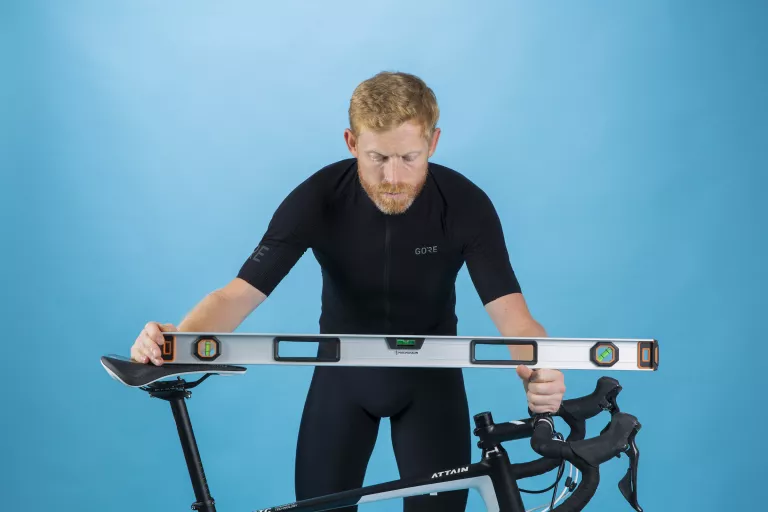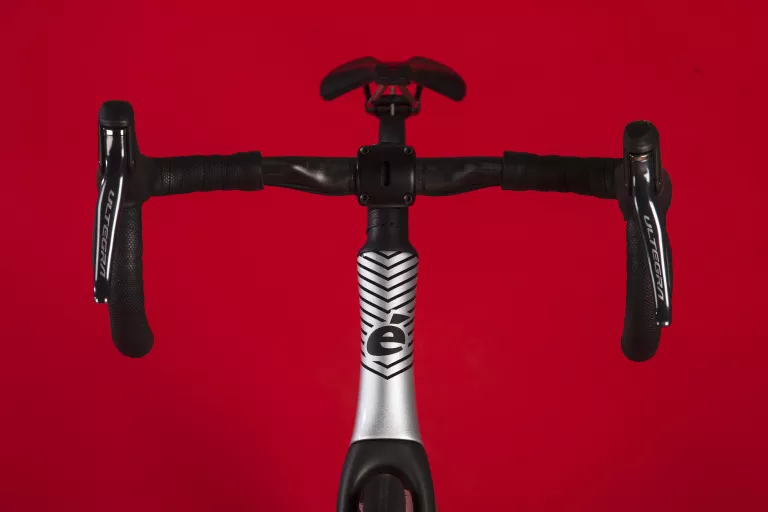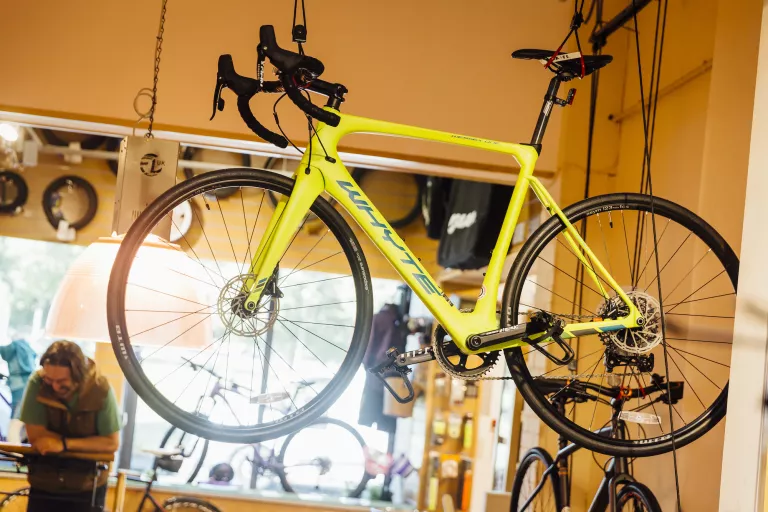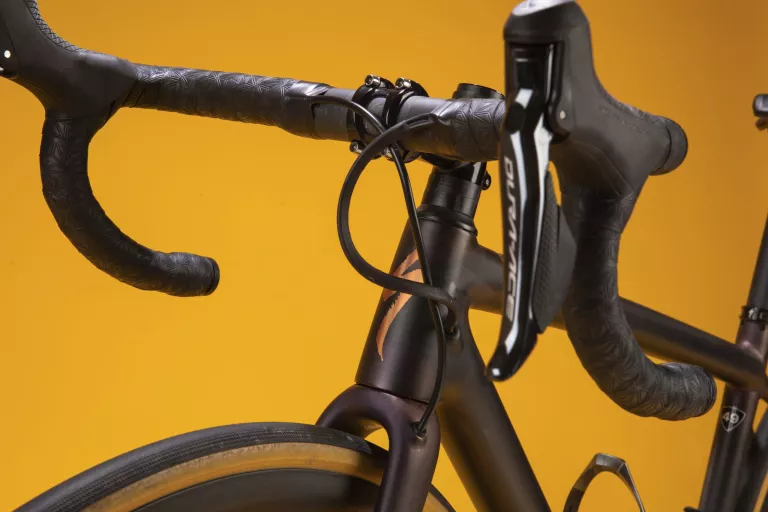Published on: cyclingweekly.com

The bottom line? Go for smooth lines if speed is your primary goal – but make sure you have the time or money to live with it
There are some readers who cannot tolerate the use of the word “cockpit.” Apologies if the adopted lexeme winds you up the wrong way, but not all modern-day bikes have what you’d traditionally call a ‘handlebar and stem.’ Arguably, naming these creations after the flight deck of an aircraft isn’t so fanciful – neither is compatible with amateur fettling, though clearly one to a greater extent.
There are probably more pressing considerations than naming convention. The pursuit of improved aerodynamics has meant a race for greater integration. Enter handlebar/stem duos – or – “cockpits”, and also proprietary seatposts. These mate with the frame to create smooth lines.
Is this a good thing? Well, it depends on what you want from a bike, your mechanical prowess, or, the budget you have available for future maintenance. There are a few factors well worth considering before you make a purchase.
Fit and touchpoints
Most cyclists buy complete bikes as opposed to selecting a frame and building it up with their chosen parts.
Complete bikes come with stock-sized touchpoints – handlebars, stems, seatposts (and cranks, which we’re not discussing here) – that are suited to the rider who sits on the line of statistical averages for the frame size. Few cyclists will attest to being the perfect example of Mr Average, and, if you’re a Ms, you’re not the ‘Average’ customer in most cases. There’s nothing new here – except that if a rider wants to enjoy the speed benefits of integration then they’re now locked into utilising the matching integrated “cockpit.” And at the rear end, the proprietary seatpost.

These touchpoints are rarely on the budget end. As an example, we found the Cervélo S5 V stem retailing at £267, the accompanying bars £356, and the seatpost at £140.
In many cases, a standard steerer diameter means that you could swap the aero stem with a standard round one. The Cannondale SuperSix Evo is an example of this, and the designers of the Cervélo S5 with its Starship Enterprise-worthy features intentionally built in “compatibility with standard stems and handlebars to accommodate the widest fit range possible.” However, the assumption is that most will want to ride the bike with its matching parts.
“People can now buy £6,000, £7,000 or £8,000 bikes online. As a result, there are so many people riding around on very high-end bikes that don’t fit them,” says Dave Farmer, owner at Leatherhead’s Surrey Cycle Works.
Farmer has found a way around this: when bulk ordering bikes that come with expensive touchpoints, he purchases extra handlebars/stems and seatposts as well as cranks and saddles, selling each bike after a detailed fit
“We have enough stock that I’m always exchanging them. There will always be a 6ft 4in person with narrow shoulders or a 5ft 2in person with really wide shoulders, things get swapped around all time – but not everyone offers that,” he says.
Cervélo’s director of product management, Maria Benson, told us: “Generally, dealers offer a fit as part of the purchase of the bike. However, each dealer has their own business model around this process. We ensure that we have the parts available to support our dealers.” The brand confirmed that it held plenty of stock which the dealer could “invest in”, but these don’t come for free.
Speaking about one brand (which was not Cervélo), Farmer said: “I have asked if, when they release these bikes, they can send me extra handlebars/stems and seatposts so that I can service the customer free of charge. But they said it’s too expensive for them” – so the cost, in this case, ends up on Farmer’s bottom line but usually, it’s passed on to the consumer.
Resale and waste
Another red flag raised by integrating expensive components is resale.
Farmer himself rides the aforementioned Cervélo S5 – and sings its praises for offering an injection of speed on the flat roads, noting: “I would struggle to hold the wheel on our club training rides on a bike with less aero features.” However, he adds: “If I sell that bike later on, I’ve got to hope the person that buys it wants a 120mm stem and a 40cm handlebar and a setback seatpost – it would be about £1,000 to change all those parts and three hours in the workshop to do it.”
Then there are bikes like the Giant TCR Advanced SL and SL 0. Whilst Giant has used a two-piece bar and stem, leaving cables partially exposed for ease of maintenance and component swaps, the brand has opted for an integrated seatpost that is cut to the rider’s specification. This isn’t about saving on watts. The ‘ISP’ (integrated seatpost) means that the rear triangle can be formed in one mould, resulting in a stiffer frame that weighs less due to a reduced need for reinforcement. An additional clamp gives you 25mm or 45mm of adjustment, but this isn’t a resale-friendly choice. At the standard Advanced level, things are a little simpler with a separate seatpost.
Whilst many consumers will sell on unwanted components, there is an element of waste to be considered.
“Bikes ride best when they are tuned to the rider. But in real life, riders are forced to buy a standard bike, and then customise themselves. Not only [is this] a lot of hassle, parts coming off are often damaged or at least considered second hand, quickly losing value – and wasted,” said Erik Bronsvoort, director at Shift Cycling Culture – a group set up with the aim of decreasing the environmental impact of cycling.
Maintenance

The work involved in maintaining a top-end bike with integrated front-end components varies dramatically between bikes. Every brand has its own method, though there are themes and similarities.
Since the arrival of these systems, most brands have adopted split spacers which make it possible to drop the front of the bike without cutting brake hoses, albeit usually running round spacers on top until a commitment to chopping the steerer can be made. Cervélo’s new system, seen on the Caledonia-5, features a channel on the underside of the handlebars to avoid running the hoses on the inside.
Also, Benson pointed out, the introduction of wireless SRAM eTap groupsets and Shimano Di2 cables which don’t need replacing due to stretch does reduce the servicing required in most cases.
“Effectively, all of the service needed for these parts can be done without any disassembly at all. One exception is the need to replace headset bearings, as many integrated systems run through the upper headset bearing. A smart design of the front end to ensure the bearing is protected from the elements and sweat is key,” she said.
But it is the ‘headset’ problem which Farmer picks up on.
“We recently had a customer come in with an aero bike with a stiff headset. We’re looking at new gear cables, new brake hoses, a brake bleed and a complete strip-down of the bike. It’ll take three hours. The cables run through the headset bearing, so you have to take it all apart – the headset itself costs £60, but it’s £150 labour plus cables – so you’re looking at about £300.”
If you’re so minded, you can learn to do this work at home, but given this takes professionals a reported three hours you have to ask: do you have three hours spare to clean out your headset after a winter of training on the turbo?
Building the bikes in the first instance is rarely quick. “With clean parts, I can put a standard bike together in 70 minutes. Comparatively, when we had the Specialized Venge in, those bikes took us six hours to build,” Farmer says.
“As a mechanic, and an instructor teaching regular people basic home mechanics, I’m personally not interested in the latest technology. Internal cable routing is terrible. Owners have a right to be able to repair their bike – it’s very disempowering [if they can’t],” says Jenni Gwiazdowski, author of How to Build a Bike and founder of DIY workshop London Bike.
“A lot of the new, innovative tech came from racing, where every watt matters. That’s where the internal cable routing came from. You don’t need that if you’re riding to work!” she adds.
What’s the watt pay-off?

To understand the trade-off, you need to know how much you’re saving in watts. This is difficult to quantify since it depends upon the bike in question, the bike we’re comparing it to, the speed you’re riding at, and more. It is always important to remember that the percentage of drag attributed to the rider is around 80 to 85 per cent, with the bike making up a much smaller percentage.
In terms of integrated cables, when Merida released its new Reacto, it claimed a 2 watt saving, per cable, at 45kph.
Asked how much free speed aero integration might afford over a traditional round-tubed bike, Cervélo’s engineering manager Scott Roy said: “There are many variables that go into an answer to this question, such as: handlebars used on the round-tube bike, does the round-tube bike have internally routed cables/brakes through the frame, rim brake vs. disc, etcetera. However, we can make a comparison of Cervélo vs Cervélo. The extreme case is to compare the S5 to our previous C5 endurance bike where S5 is ~421g faster than C5 – or approximately 55 watts.”
Discussing the test protocol, he added: “We have, [and] the industry has, normalized around 48 km/h (30mph) incoming wind speed, regardless of yaw. Effective wind speed during tests can fluctuate between 48 to 50, since we need to compensate for temperate, humidity and other factors throughout the day, the rolling road is constant at 50km/h.”
In most cases, we don’t have data at slower speeds. We do know that the differences in watt savings between a rider at 50k/ph vs 40k/ph are significant. Testing at the Boardman Performance wind tunnel, we found the difference between a road bike with clip-on aero bars vs a dedicated time trial bike was 3 watts at 40k/ph, vs 21 watts at 50k/ph.
It’s not all down to saving watts. One-piece front ends and aero seatposts are usually constructed from carbon, sucking up road vibration much more effectively. You’ll always get more flex and therefore more comfort from these components than you will from the frame. However, the same applies to more standard round carbon constructions.
Is this what customers want?

Manufacturers would not keep tucking away cables and redesigning components if customers weren’t buying them. Unsurprisingly, physics has not been lying to us and – all things being equal – a bike that diminishes drag is faster.
Each brand takes its own approach. Taiwanese giant, Giant, opts for a more exposed two-piece bar/stem set-up on the TCR all-rounder but fully integrates the cables on its Propel aero bike .
A representative told Cycling Weekly, “Giant continually evaluates the pros and cons of internal cable routing based on the best interest of the customer and their intended use of the product. Where we can provide a cleaner aesthetic, protection from the elements, aerodynamic superiority and smoother – more direct- routing, Giant’s designers and engineers take the step to provide integrated cable routing. While we recognise that internal routing can create challenges for mechanics who work on these products, we feel the overall benefits far outweigh the challenges of internally routing cables.”
Cervélo’s Benson noted: “Integration around the cockpit has been a more recent opportunity for designers to innovate around new ways to improve integration that will not only result in a performance benefit, but also increase the aesthetic appeal of bikes.”
The final word?

“In the pursuit of speed, integration is worth it,” Farmer says. His stable contains an aero Cervélo S5 with all the integrated, proprietary gubbins, and a Specialized Aethos which is all about standard standards, including a round bar, stem, seatpost and cables that are external until they reach the down tube and fork.
“The Aethos is a brilliant riding bike, take it out for 90 minutes and you just feel warm inside – but on training rides with the club, when we’re doing 25mph/40kph for an hour, the S5 is just better.” The same logic would apply to any lightweight, round-tubed bike vs its aero stablemate, not just the ones Farmer happens to own himself.
“Before you buy a bike, fully understand all the parameters you’re talking about. You’re not buying a new phone, you need to think about how the bike integrates with you, your riding, and your maintenance budget.”
In other words, it’s horses for courses. At Cycling Weekly, we won’t write off round seatposts and external cable routing, and nor will we write off bikes with components that look like they fell off a passing spaceship. What is important is that, if you’re buying an expensive bike, you do so without any blindspots as to what you’re buying into.

